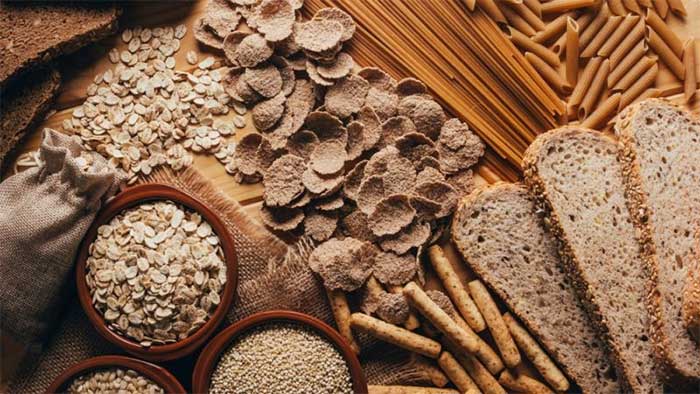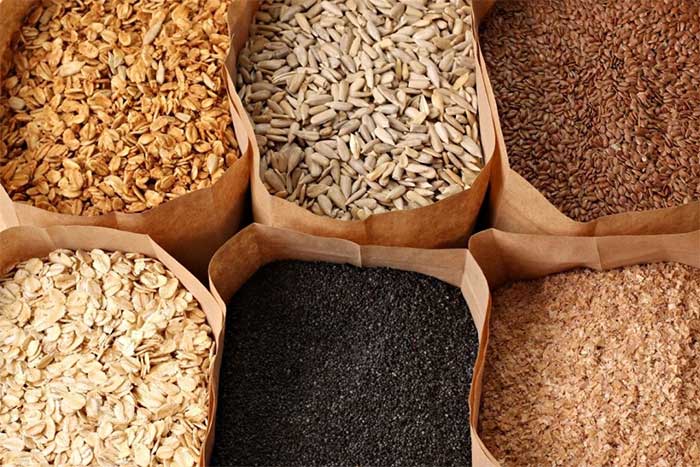Many people believe they are consuming whole grains; however, in reality, they may be confusing grains with whole grains.
According to a study published in November in the American Journal of Nutrition, between 2003 and 2018, adults in the U.S. consumed more whole grains than ever before. However, researchers indicate that the amount of whole grains consumed by Americans is difficult to determine due to the ambiguous definition of whole grains.
“The lack of a standard definition leads to confusing labeling on product packaging, making it difficult for people to accurately assess their consumption levels,” said Mengxi Du, a nutrition expert and PhD candidate in Nutritional Epidemiology at Tufts University, who is also the lead author of the study.
According to the Dietary Guidelines for Americans, at least half of all grains consumed each day should be 100% whole grains. Thus, a slice of whole grain bread, half a cup of cooked oatmeal, and three cups of popcorn would meet the daily whole grain requirement.

Americans consume only 25-40% of the recommended daily whole grains. (Photo: Shutterstock).
The study analyzed survey data from nearly 40,000 adults and found that most people consume only 25-40% of the aforementioned daily recommendation, despite the consumption of whole grains increasing by approximately 40-62%.
What Are Whole Grains?
According to the New York Times, a grain is considered “whole” when it contains all three parts: the bran, endosperm, and germ. The bran is the outer layer rich in fiber, containing many B vitamins and minerals. The endosperm is the hard middle layer that contains carbohydrates and some proteins along with vitamins. The germ, located within the endosperm, is rich in vitamins, healthy fats, and other beneficial compounds.
Barley, brown rice, millet, oatmeal, wheat, rye, corn, and farro are all common whole grains. (Quinoa and buckwheat are technically seeds but are often classified as whole grains in diets).
Joanne Slavin, a professor of Food Science and Nutrition at the University of Minnesota, stated that whole wheat—including whole wheat flour—is considered a whole grain because it contains the three aforementioned components. However, white flour is not counted as a whole grain because the bran and germ have been removed.

Some familiar whole grains. (Photo: Adobe Stock).
According to nutrition expert Maya Feller, regardless of the source, whole grains are a food that should be included in the diet due to their nutritional value and fiber content.
She noted that a high-fiber diet offers numerous health benefits, including regulating cholesterol and blood sugar levels, as well as improving digestion.
“Some grains can be an excellent source of B vitamins and essential amino acids such as methionine and phenylalanine,” she added.
How to Incorporate Whole Grains into Your Diet
According to Jennifer Pomeranz, an Assistant Professor of Management and Public Health Policy at the Global Public Health School of New York University, who co-authored the study, even when people are aware of the benefits of whole grains, they still struggle to measure their daily whole grain consumption due to the lack of strict regulations or clear definitions of this food category.
Buy Whole Grain Seeds
Pomeranz said that the easiest way to “ensure 100% whole grains” is to purchase whole seeds, such as a bag containing only oats or brown rice.
Prioritize High-Fiber Products
According to Slavin, among products labeled as whole grains, those with the highest fiber content typically contain the most whole grains. Du agrees that a high fiber content is a good indicator that the food contains a substantial amount of whole grains.
Pay Attention to Ingredient Order
“For whole grain items with multiple ingredients, choose products that list a whole grain as the first ingredient. If the first few ingredients include terms like ‘100% whole grain,’ ‘whole wheat flour,’ or ‘100% whole wheat flour,’ that’s a sign of a good whole grain product,” Du stated.
Additionally, Slavin noted that foods primarily containing refined grains (not counted as whole grains), such as white flour or corn flour, do not mean that the food is unhealthy.
“All grains contribute nutrition to your body; however, refined grains just contain less fiber,” she added.
Start Slowly
According to nutrition expert Feller, to increase whole grains in your diet, one does not need to change their entire diet immediately.
“Initially, individuals should add a small portion of whole grains to their diet. If you are not used to eating whole grains, start with more accessible options like oatmeal or corn,” she suggested, mentioning whole grain side dishes or breakfast smoothies mixed with oats.
Feller encourages everyone to mix grains if they find themselves bored with one type of grain.
“If you’re tired of brown rice, try whole grain white rice or bread made from rye. The change can make things more interesting and help you reach the recommended daily whole grain intake,” she said.


















































